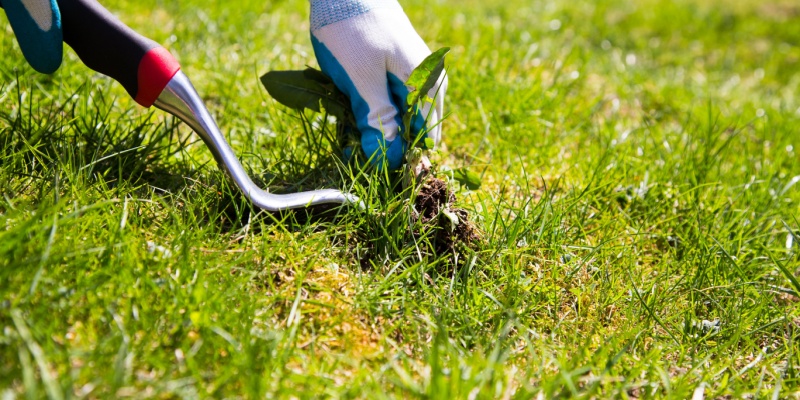Ohio’s diverse climate plays a pivotal role in the growth and spread of various weed species across the state. Understanding the relationship between Ohio’s weather patterns and weed behavior is essential for homeowners aiming to maintain weed-free yards. In this blog, we delve into how Ohio’s unique climatic conditions impact weed growth and explore tailored control strategies that effectively address these challenges.
Temperature Fluctuations and Weed Germination
Temperature is a critical factor in weed germination and growth. Ohio’s temperature variations throughout the year create multiple opportunities for different weed species to establish themselves.
- Spring Warm-Up:
As temperatures rise in spring, dormant weed seeds break dormancy and begin to germinate. Weeds like crabgrass and chickweed take advantage of the warming soil to sprout rapidly.
- Summer Heat:
High temperatures and prolonged sunlight during Ohio’s summer months accelerate the growth of aggressive weeds such as nutsedge and spurge, which thrive in hot, dry conditions.
- Fall Cooling:
Cooler temperatures in fall slow down weed growth but are ideal for perennial weeds to strengthen their root systems before winter dormancy.
- Winter Chill:
While most annual weeds die off during Ohio’s cold winters, perennial weeds persist underground, ready to regrow when favorable conditions return in spring.
Precipitation Patterns and Weed Development
Ohio receives a balanced distribution of rainfall throughout the year, with peak precipitation in the spring and early summer. These moisture levels significantly influence weed growth dynamics.
- Spring Rains:
Abundant spring rains create optimal conditions for weed seeds to germinate and establish quickly. Weeds like annual bluegrass and henbit flourish during this period.
- Summer Droughts:
Occasional summer droughts stress lawns and open niches for drought-resistant weeds such as dandelions and clover to invade.
- Fall Moisture:
Fall rains help perennial weeds like dandelions and creeping Charlie solidify their root systems, making them harder to eradicate in subsequent seasons.
Humidity and Weed Resilience
Ohio’s humid climate, especially in the summer, supports the resilience and spread of various weed species. High humidity levels facilitate seed dispersal and increase the survivability of weed seedlings.
- Humidity-Driven Growth:
Weeds such as ground ivy and milkweed thrive in humid conditions, leveraging the moisture to spread rapidly across lawns and gardens.
- Fungal Diseases:
While high humidity can promote beneficial fungal diseases that control certain weed populations, it can also create environments where resilient weeds develop resistance to control measures.
Wind Patterns and Weed Dispersion
Wind plays a significant role in the dispersion of weed seeds across Ohio’s landscapes. Understanding wind patterns can help in predicting and preventing the spread of invasive weed species.
- Seed Carriage:
Strong winds can carry lightweight weed seeds over long distances, introducing new infestations to previously weed-free areas.
- Barrier Strategies:
Implementing windbreaks and maintaining healthy barriers like dense grass or hedges can reduce the likelihood of weed seed dispersal into your lawn.
Developing Climate-Responsive Weed Control Strategies
To effectively manage weeds in Ohio, it’s essential to adopt control strategies that are responsive to the state’s climatic conditions. Here are some tailored approaches:
1. Seasonal Herbicide Application
- Spring Applications:
Utilize pre-emergent herbicides to prevent the germination of spring-seeded weeds. Follow up with selective post-emergent herbicides for any weeds that manage to emerge.
- Summer Treatments:
Apply targeted post-emergent herbicides to control summer-flowering weeds. Ensure proper lawn maintenance practices to reduce weed susceptibility.
- Fall Management:
Implement pre-emergent treatments for winter annuals and use systemic herbicides for perennial weeds to weaken their root systems before winter.
2. Maintenance Practices for Climate Adaptation
- Mowing Techniques:
Adjust mowing heights according to seasonal growth patterns. Taller grass in summer shades the soil, reducing weed seed germination.
- Irrigation Management:
Optimize watering schedules to promote deep root growth in grass, making it more competitive against weeds. Avoid overwatering, which can create favorable conditions for certain weed species.
- Soil Health:
Maintain healthy soil through regular aeration and appropriate fertilization. Nutrient-rich soil supports vigorous grass growth, naturally suppressing weed establishment.
3. Integrated Pest Management (IPM)
- Biological Controls:
Introduce natural predators and beneficial insects that target specific weed species, reducing their populations without harming your lawn.
- Mechanical Methods:
Combine chemical treatments with manual weed removal and mowing to enhance overall weed control effectiveness.
- Monitoring and Adaptation:
Regularly inspect your lawn for early signs of weed infestation and adjust your control strategies based on current climate conditions and weed behavior.
The Advantage of Professional Weed Control Services in Ohio
While understanding Ohio’s climate and its impact on weed growth is invaluable, implementing effective control strategies can be complex and time-consuming. Professional weed control services offer several advantages:
- Expertise in Local Conditions:
Professionals are well-versed in Ohio’s specific climate challenges and can tailor their methods accordingly.
- Access to Advanced Tools:
Utilizing specialized equipment and high-quality herbicides ensures more efficient and thorough weed eradication.
- Ongoing Support:
Regular maintenance and monitoring by professionals help sustain a weed-free lawn throughout the year, adapting strategies as climatic conditions change.
Ohio’s climate significantly influences weed growth patterns, necessitating a strategic and informed approach to weed control. By recognizing the interplay between temperature fluctuations, precipitation, humidity, and wind patterns, homeowners can implement effective weed management practices that are tailored to each season’s unique challenges. For those seeking comprehensive and climate-responsive weed control solutions, partnering with a professional service like Weed Busters can ensure a healthy, vibrant, and weed-free lawn all year round.

